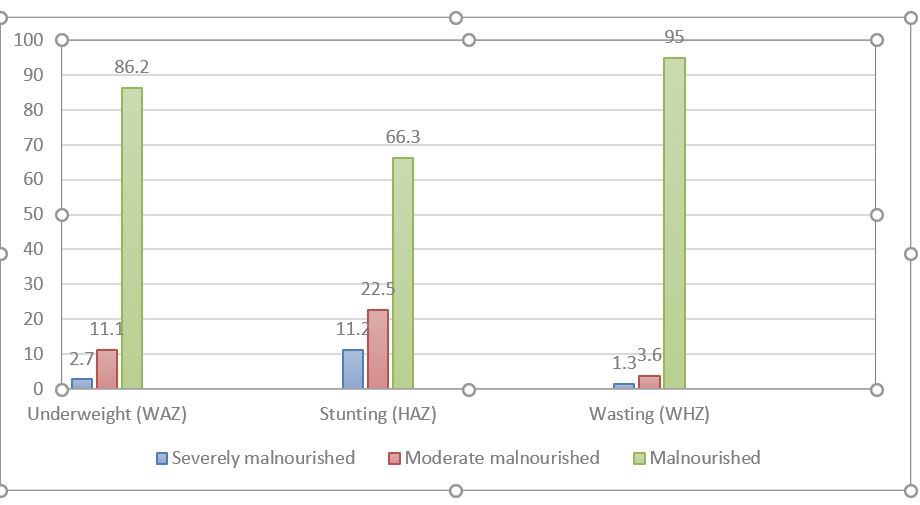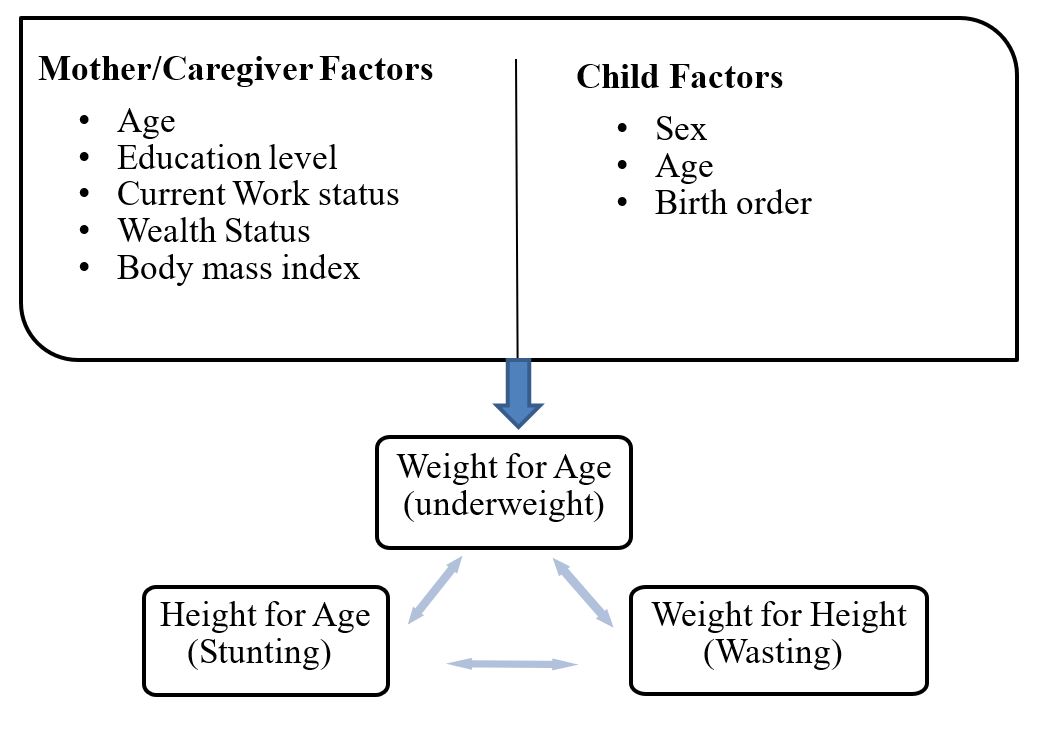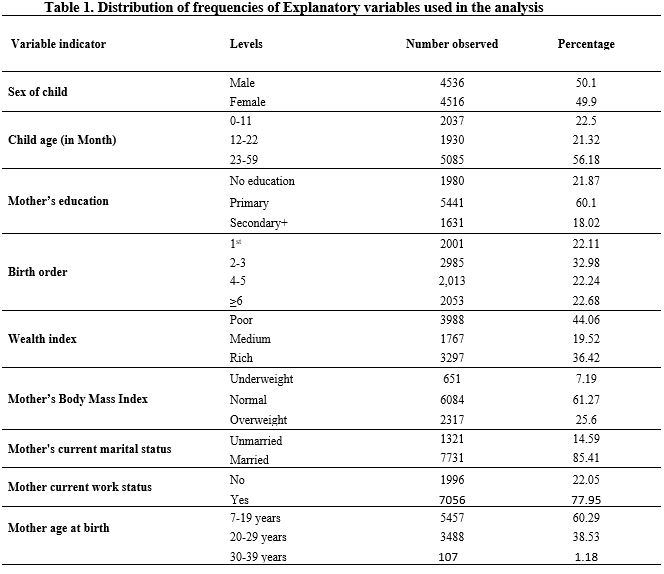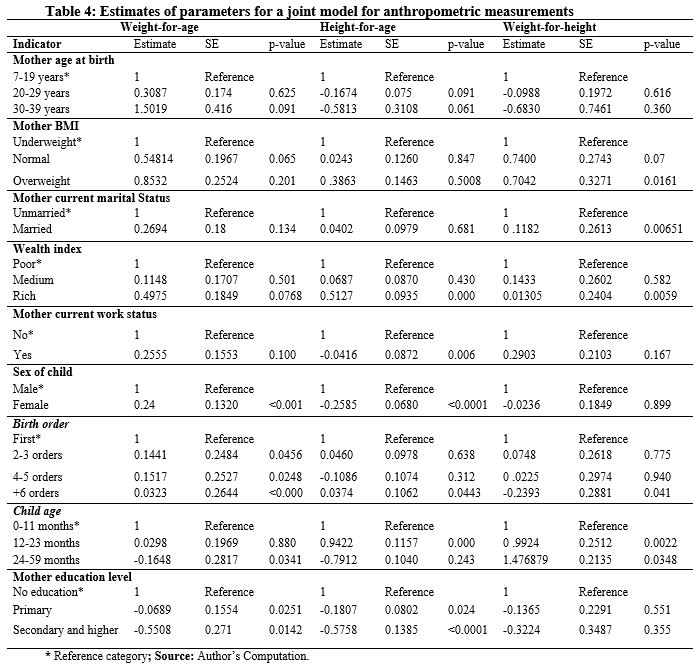Analysis of Correlated Outcomes of Anthropometric Measurements for Under-Five Children in Tanzania
Conference
Format: CPS Abstract
Keywords: anthropometric measurements, correlated outcomes, height for weight, malnutrition, weight for age
Abstract
Malnutrition is a leading cause of morbidity and mortality among children under the age of five worldwide. In Africa, the prevalence of wasting is 6.4 percent, which is lower than the global average of 6.9 percent and there has been a slow progress to meeting global nutrition goals, and children under the age of five are at the highest risk of all types of malnutrition, with 40% stunting and 27% wasting (WHO, 2020).
However, The study aimed at applying Multivariate Generalized Linear Mixed Models to examine factors associated with correlation outcomes, in particular, anthropometric measurements among under-five children in Tanzania. Three anthropometric measurements include Weight for Age, Height for Age and Weight for Height among under-five children in Tanzania were jointly modelled to identify common factors associated with childhood malnutrition. A total of 9,052 children with valid measures of Height and Weight were processed and analyzed. The results indicate that Weight for Age was correlated with Height for Age (p-value<2e-16) and Weight for Height (p-value<2e-16). The Multivariate Ordered Logit Model has lower AIC=53213.92 and BIC=52727.95, indicating better model fit than the Multivariate Ordered Probit Model. In Tanzania, the age of the child, birth order, mother education level, child gender, mother working status, wealth index, marital status, and mother body mass index are important determinants of malnutrition among children under the age of five. Moreover, the common factors were child’s age, Birth order, Mother’s education attainment, child’s sex, Mother working status, wealth index, Marital status and Mother’s Body Mass Index. As a result, emphasis should be placed on analyzing correlated health outcomes in order to draw conclusions about the factors that may have a mutual effect on anthropometric measurements.
Figures/Tables
Capture

Image from artile

Table1

Table2

Table3

Table4


